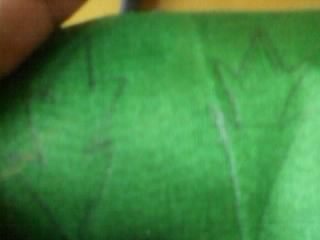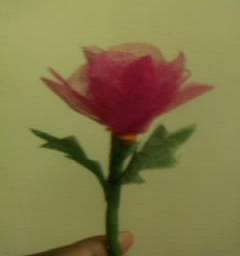Making Artificial Rose Flowers

You can go shops and buy those colorful, bright and exquisite decorative items to adorn your living room. But are they affordable to the common man? Those attractive pieces might be expensive for their value and appearance. If you’re on a budget, you can no longer think of stepping into such shops. By spending a little time and a little money, you can make some fun crafts for brightening up your home. One such handicraft is making artificial flowers. These flowers can fill your flower vase or basket with a variety of colors and enhance the ambience.
Cutting and arranging of petals is the vital thing in making artificial flowers. The fabric stuff used for making this demands more attention. You might’ve heard of artificial silk flowers, but using silk may not come handy for everyone. Here I’m detailing on how to make artificial rose flowers using Organdy clothes. Their stiff texture makes it easier to make rose flowers for anyone. Also they come in radiant colors that can really reflect the colors of natural roses.

Accessories
- Organdy clothes(bit pieces) of pink, green, white, yellow, orange ,lavender and blue color
- Electric wire (PVC) of 2m length.
- Fabric glue
- Cotton yarn












Making
1. Take the Organdy cloth of pink color. Cut a small piece from it and double-fold. Draw the petal shapes as illustrated in the picture. You’ll get 8 petals after cutting it. Likewise, make 8 more petals.
2. The electric wire is assumed to be the stem. Take it, cut the rubber-like polymer covering about 2cm on top and bottom. Now you can see the pointed wire projected out.
3. Take 1 petal, cover the top of the wire with it and tie using the cotton yarn. Repeat this step with one more petal. This forms the center part of the rose.
4. Form the inner layer of the rose by arranging and holding the petals as in the picture. Tie them fine on the bottom side and half part of the rose flower is complete by now.
5. While making the outer layers, care should be taken to fill up any gaps that occur. Arrange the petals compact, hold and tie them.
6. Cut more petals from your Organdy cloth in order to make your rose look showy and beautiful.
7.Take the green Organdy cloth and cut a small strip equal in length to that of the stem. Roll it all around the stem and glue it so that the wire looks green now.
8. In this step, make leaves out of the green Organdy cloth. Double-fold and make leaf designs on it. Cut the leaves, but note that they are transparent. Placing one leaf on top of another gives you a rose leaf of opaque nature. Glue it on the stem as shown in the picture. Make another leaf like this and glue it on the other side. The rose with leaves on it is ready for filling your basket. You can make more leaves and glue them beneath it as seen in a rose flower stem.
9. Make more roses from white, yellow, orange, blue and lavender clothes.
10. Making leaflets also add beauty to the flower basket. Leaflets along-with rose flowers can create the natural look of rose flowers grown in a bush.
If you’ve a flower basket, by placing a spongy base on the bottom, you can pierce the bottom wire of the roses and leaflets to it. This may feel really funny and interesting. These roses will never fade and you don’t have to replace them daily. Don’t forget to wipe off any dust that can catch them from time to time. Organdy clothes are prone to wrinkling and you need to straighten them whenever required.
Please vote!
Using which fabric you make artificial rose flowers?
Making Organdy flower bouquet
Related articles
- Cardboard gift box decorating ideas
There are so many gift packing materials available today that are enticing. Gift wrappers reflecting various themes have also caught their own place in the market. Have you ever thought of decorating your gift box with your own ideas? Here are some e - The rose flower; pictures, structure, bush, symbolis...
Rose flowers are one of the beautiful creations of God on earth. A bouquet of rose flowers can brighten up minds with its own unique beauty and fragrance. This hub discusses the structure, uses and various myths associated with rose flowers.
© 2012 Radhika Sreekanth








